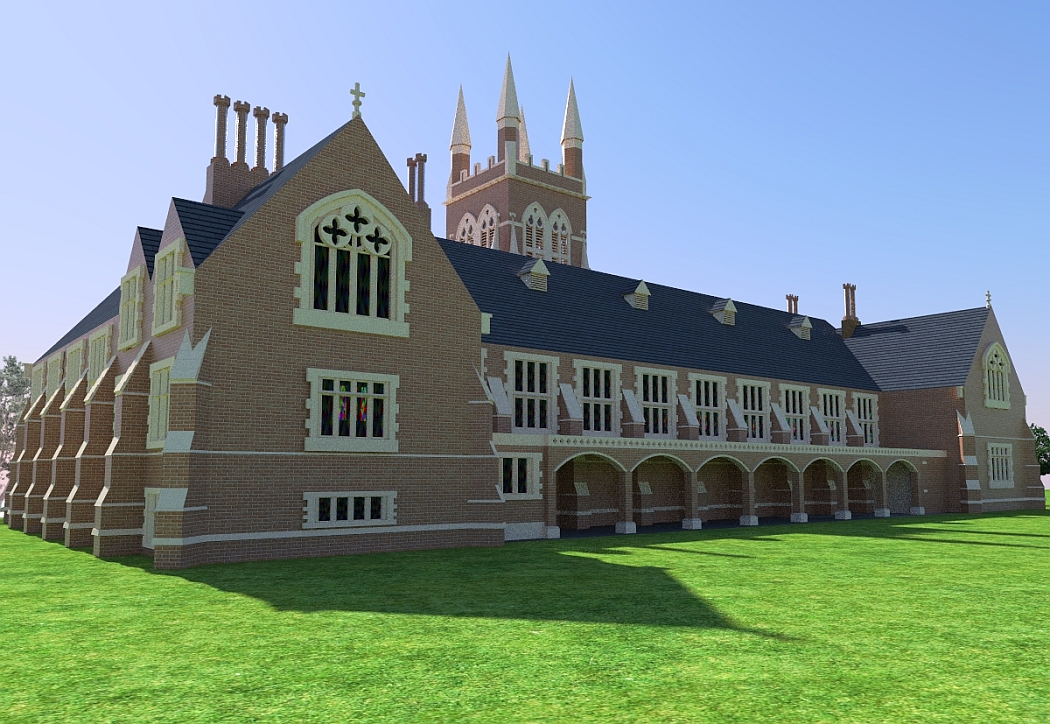 The Cloisters, Whitgift School pre 1906
The Cloisters, Whitgift School pre 1906
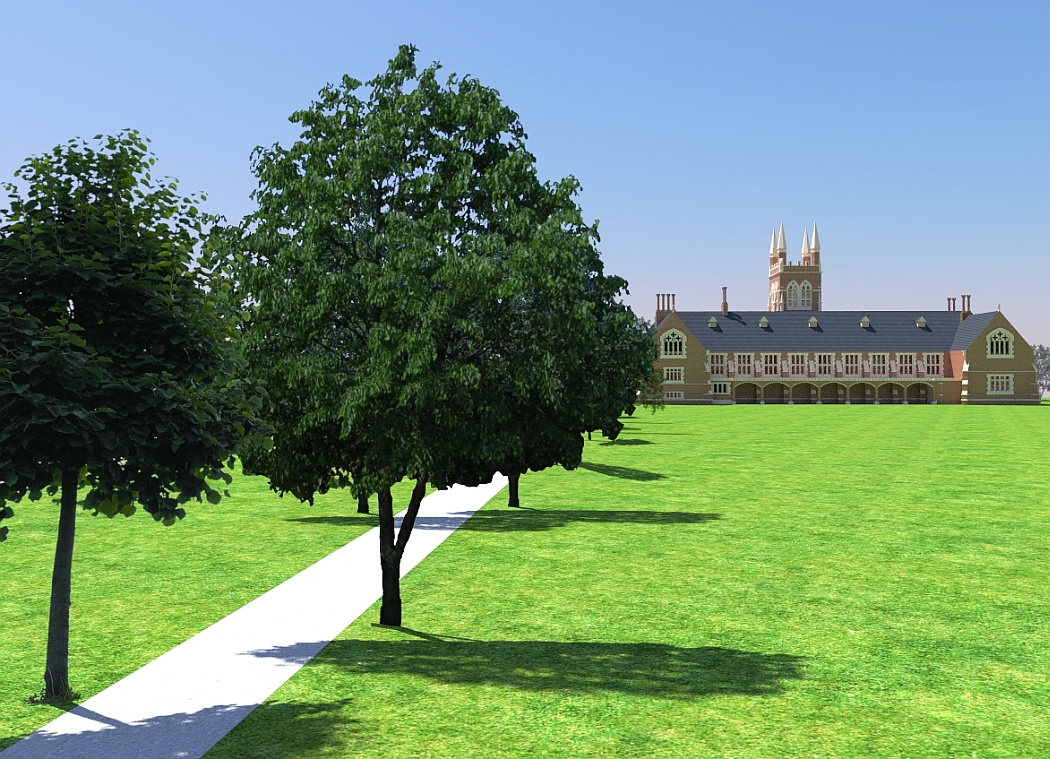 Lime Tree Walk, Whitgift School
Lime Tree Walk, Whitgift School
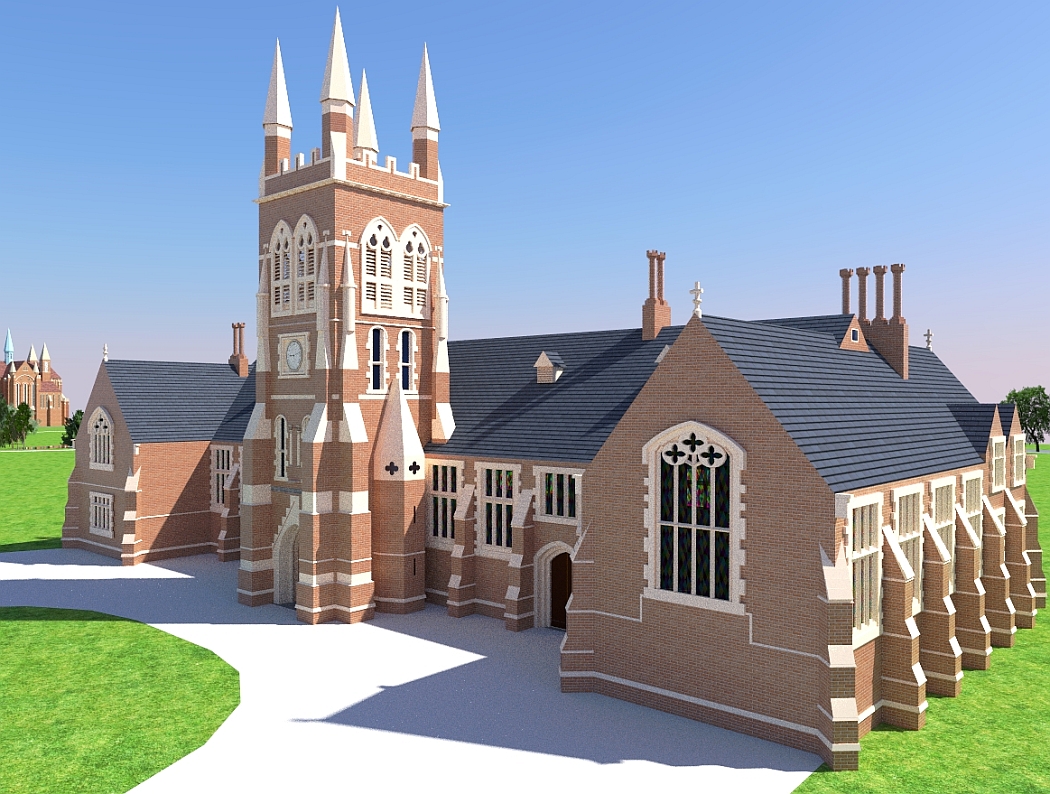 Whitgift School front view
Whitgift School front view
Arthur W. Blomfield's Whitgift School
The above picture is mainly based on A.W. Blomfield's design which is shown below. After creating models from distant photographs it was a relief to be able to work from such a clear and beautiful drawing. Later photographs of Whitgift School show some slight differences between the design below and the finished building.
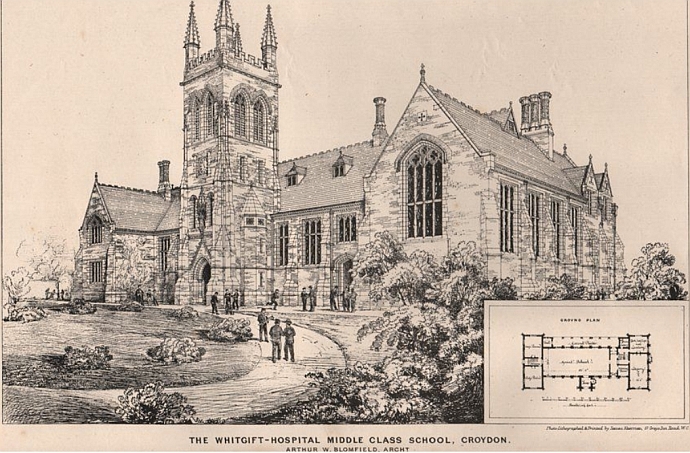 Whitgift School front view
Whitgift School front view
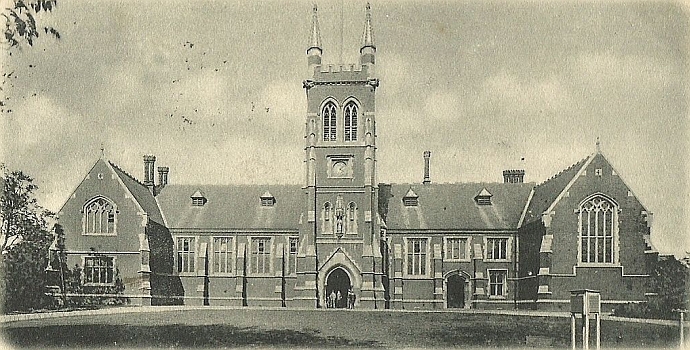 From a Whitgift School postcard date stamped 1902
From a Whitgift School postcard date stamped 1902
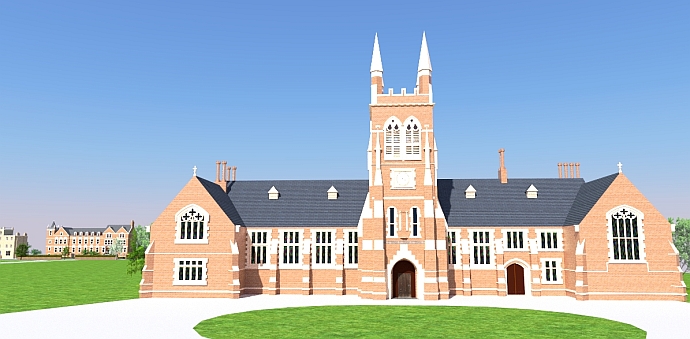 Whitgift School around the same time and date as the postcard above
Whitgift School around the same time and date as the postcard above
I've left a few things out of my model. For example, I didn't bother with the statue of Whitgift and I left out the strange conical structure above his head. The brick colour might be wrong. Some coloured postcards show them as dark red as some like the one below show them as light red so I have gone for something in between.
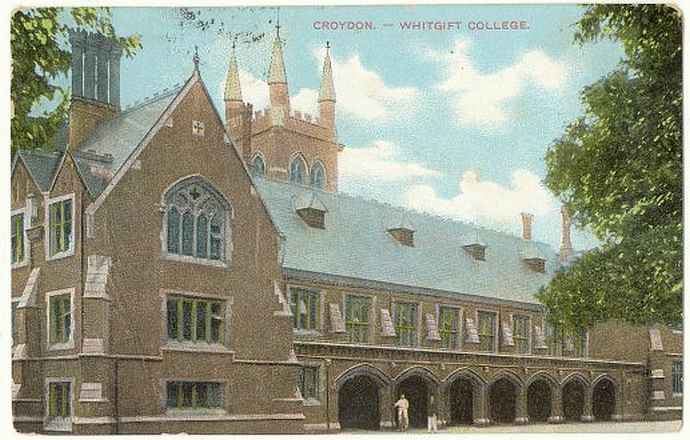 Postcard of Whitgift School Cloisters pre-1906
Postcard of Whitgift School Cloisters pre-1906
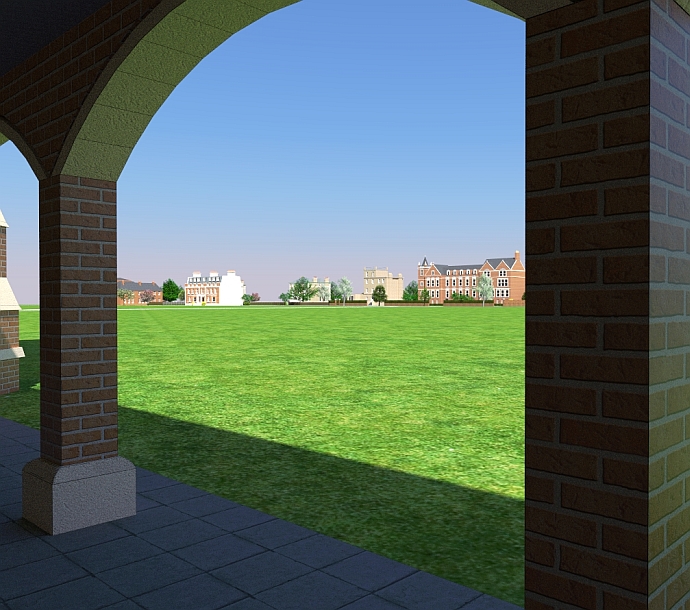 Looking from Whitgift School Cloisters towards Wellesley Road pre-1906
Looking from Whitgift School Cloisters towards Wellesley Road pre-1906
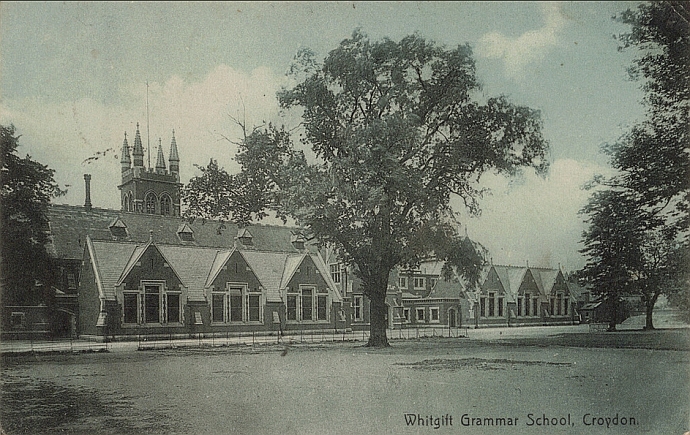 The 1906 extensions replaced The Cloisters
The 1906 extensions replaced The Cloisters
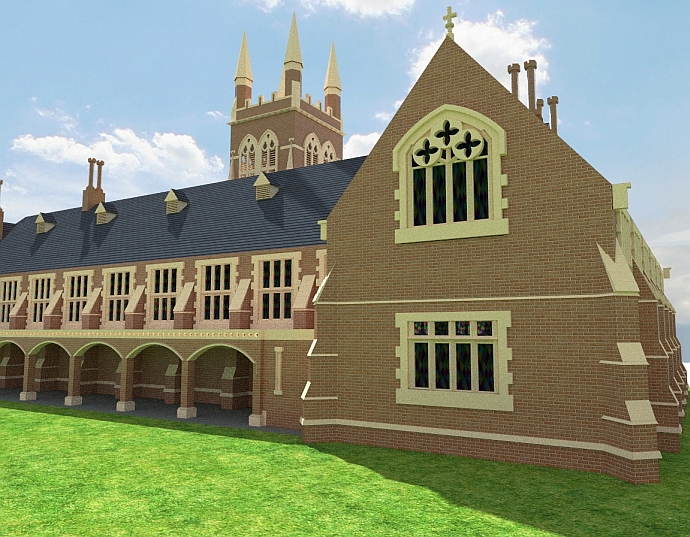 View from the rear of the building pre-1905
View from the rear of the building pre-1905
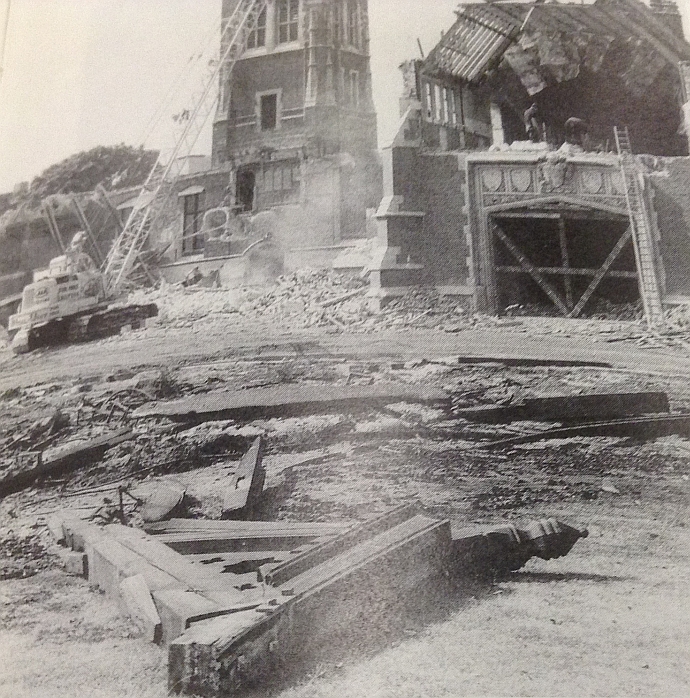 Demolition in 1965. Same rear view as above
Demolition in 1965. Same rear view as above
History of Whitgift School by F.H.G.Percy
I would normally never read a history of a school. I'd read Tom Brown's Schooldays and a few Billy Bunter books, but those books were full of interesting characters. I assumed a history of a school would be a dry list of names and uninteresting events. Percy's book was nothing like that. The only reason I picked it up was because I couldn't work out why the name of the school had changed so much. But as I turned the pages I found myself enjoying this book. I wanted to find out what happened next and I suppose that's the secret of any good story.
Percy had been a pupil at Whitgift and he taught French and English there from 1937 to 1976. He was still going strong at the age of 94 when he wrote "What really happened in Hamlet: : Madness in Elsinore is Sanity in Southwark".
Percy's descriptions of the various headmasters in this school in this school struck a cord with me. I could recognise the types. Most of them are only really interested in the more promising boys. The reason for that is because those boys are images of themselves. In the 19th century and probably at the start of the 20th century headmasters at schools like Whitgift were picked from the elite students at the elite universities.
I can remember more than fifty years ago one of my headmasters telling me, in a kindly way, that I wasn't very bright. At the time I thought he was probably right, but I didn't think he knew me well enough to make that judgement. About fifteen years ago I was surprised to find a review in my paper of a book my old headmaster had just written. I was amazed that he was still alive, but when I thought about it I realised that he was only about twenty years older than me. What surprised me most was how distinguished his academic background had been. All I remembered was that he used to go around in a gown so I knew he probably had a degree. In fact, that was unusual for most of my teachers. His PhD supervisor had been a very eminent scholar and the friend who had written the forward to his book was world famous in his field. I was so impressed by the review and what I now knew about his background that I bought the book. Perhaps I would review it on Amazon and judge him like he judged me. Alas, I couldn't get past the second chapter. He was right. By his standards I am not very bright.
The history Whitgift School up to the middle of the 20th century is all about the education of children from two classes - the lower middle class and the upper middle class. Archbishop John Whitgift's 1596 donation of a school building and a fund to pay a schoolteacher was assumed to be available to children of all classes, but the poorer parents didn't think Latin and Greek Grammar would be of any use to their children and the upper classes wanted to send their children to grander schools. The original Whitgift School buildings on George Street are shown below. They were there for nearly 300 years until in 1894 Croydon Council decided they should be demolished for road widening. Given the number of times Croydon Council have tried to demolish the Whitgift Almshouses which were built the same time as the school it is a miracle that they are still there.
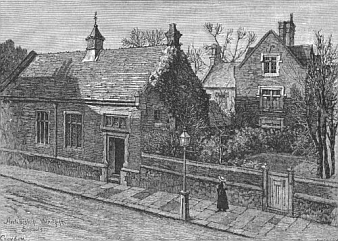 Original Whitgift School and Headmaster's House c1888
Original Whitgift School and Headmaster's House c1888
The Whitgift Foundation used the compensation for extensions to the new school and also to build a new headmaster's house on Wellesley Road.
It wasn't until 1871 when the buildings shown to the left were built that the school attracted pupils in large numbers. A few years later there was a push in Croydon for a secondary school more suitable for the needs of the lower middle classes. They weren't interested in an education geared towards university entrance. They wanted something more practical and in 1882 Whitgift Middle School was opened. Whitgift School was renamed Whitgift Grammar School. There was still no free secondary education in Croydon at this time but the Middle School was cheaper. The Middle School pupils left at 14 or 15 but there was an option to move on to the Grammar School.
In 1931 Whitgift Middle School moved to North End and took over the buildings shown on the left. Whitgift Grammar school moved to Haling Park. In 1954 Whitgift Middle School changed its name to the Trinity School of John Whitgift meanwhile Whitgift Grammar School had become just Whitgift School again. Both schools were fee paying schools with high academic standards, but Trinity was direct grant, which meant some pupils had their fees paid by the government, and Whitgift had a similar arrangement with the local education authority. In 1965 Trinity School moved to a new site in Shirley and the buildings to the left were destroyed.
Reg Prentice
It is sad to think that those who have benefitted most from a good education are often those who wish to deny it to others. Reg Prentice was a Old Whitgiftian gone bad. He was one of nature's natural traitors. Muggeridge was the same. He often turned on those who had helped him. Maybe it's something about Croydon that does that to them. When Prentice became Education Secretary in the 1974 Labour Government he said "It is certainly my wish to see a comprehensive system affecting all secondary education". He was warned at the time that "In pursuit of egalitarian theories the Labour Party is creating more inequality" and it has come to pass - without the government direct grants, which Prentice helped to end, fewer working class pupils are getting the chance of a first rate secondary education. He had entered Whitgift on a scholarship. Prentice stabbed his Labour Party comrades in the back in few years later when he joined the Conservative Party.
To preserve our liberties
On March 11th 1922 Major General Sir John Raynsford Longley KCMG CB (1867 - 1953) gave the following speech when he laid a memorial stone at Whitgift School to commemorate the Whitgift School boys who had died in the First World War :
... 1400 of her boys served England in her hour of need. Between 300 and 400 gained distinctions, among them 100 Military Crosses. We specially commemorate the 252 who died in the performance of their duty to preserve our liberties and those of the world at large.
Those liberties don't count for much today. In 2009 a Croydon MP was stopped from taking pictures of East Croydon Railway station. He explained that the photos were needed for his parliamentary work. The police still stopped him and then they searched his bag.
My grandfather was a contemporary of those 252 boys who died, but he wasn't British and he kept out of that stupid filicidal war. He has at least 200 descendants. If those Whitgift boys had lived and if they had been just a quarter as fecund as my grandfather then the country would have benefited from the presence of 12,600 people of higher than average intelligence. The last claim can be debated, but the Whitgift boys were brighter than average and bright parents tend to have have bright kids.
